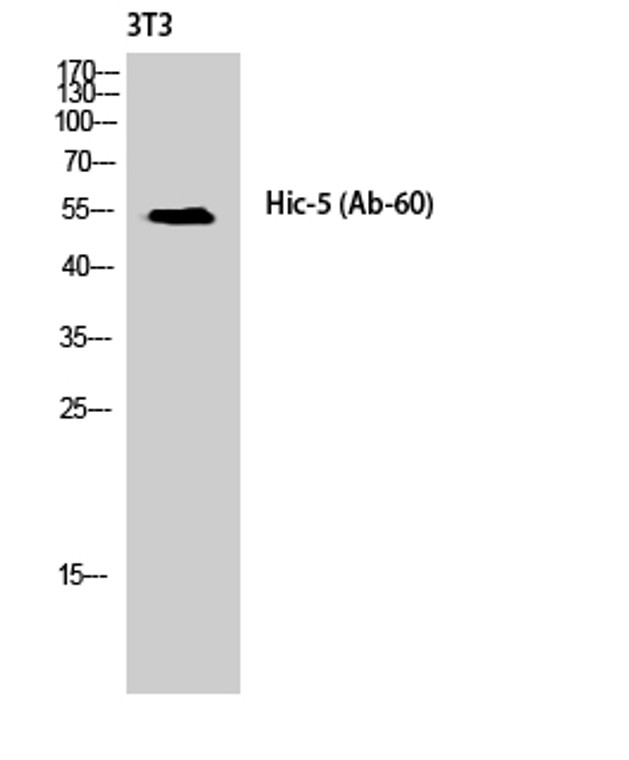| Host: |
Rabbit |
| Applications: |
WB/IHC/IF/ELISA |
| Reactivity: |
Human/Mouse/Rat |
| Note: |
STRICTLY FOR FURTHER SCIENTIFIC RESEARCH USE ONLY (RUO). MUST NOT TO BE USED IN DIAGNOSTIC OR THERAPEUTIC APPLICATIONS. |
| Short Description: |
Rabbit polyclonal antibody anti-Transforming growth factor beta-1-induced transcript 1 protein (31-80 aa) is suitable for use in Western Blot, Immunohistochemistry, Immunofluorescence and ELISA research applications. |
| Clonality: |
Polyclonal |
| Conjugation: |
Unconjugated |
| Isotype: |
IgG |
| Formulation: |
Liquid in PBS containing 50% Glycerol, 0.5% BSA and 0.02% Sodium Azide. |
| Purification: |
The antibody was affinity-purified from rabbit antiserum by affinity-chromatography using epitope-specific immunogen. |
| Concentration: |
1 mg/mL |
| Dilution Range: |
WB 1:500-2000IHC 1:100-1:300IF 1:200-1:1000ELISA 1:10000 |
| Storage Instruction: |
Store at-20°C for up to 1 year from the date of receipt, and avoid repeat freeze-thaw cycles. |
| Gene Symbol: |
TGFB1I1 |
| Gene ID: |
7041 |
| Uniprot ID: |
TGFI1_HUMAN |
| Immunogen Region: |
31-80 aa |
| Specificity: |
Hic-5 Polyclonal Antibody detects endogenous levels of Hic-5 protein. |
| Immunogen: |
The antiserum was produced against synthesized peptide derived from the human Hic-5 at the amino acid range 31-80 |
| Post Translational Modifications | Phosphorylated by gonadotropin-releasing hormone-activated SRC. |
| Function | Functions as a molecular adapter coordinating multiple protein-protein interactions at the focal adhesion complex and in the nucleus. Links various intracellular signaling modules to plasma membrane receptors and regulates the Wnt and TGFB signaling pathways. May also regulate SLC6A3 and SLC6A4 targeting to the plasma membrane hence regulating their activity. In the nucleus, functions as a nuclear receptor coactivator regulating glucocorticoid, androgen, mineralocorticoid and progesterone receptor transcriptional activity. May play a role in the processes of cell growth, proliferation, migration, differentiation and senescence. May have a zinc-dependent DNA-binding activity. |
| Protein Name | Transforming Growth Factor Beta-1-Induced Transcript 1 ProteinAndrogen Receptor Coactivator 55 Kda ProteinAndrogen Receptor-Associated Protein Of 55 KdaHydrogen Peroxide-Inducible Clone 5 ProteinHic-5 |
| Cellular Localisation | Cell JunctionFocal AdhesionNucleus MatrixCytoplasmCytoskeletonAssociated With The Actin CytoskeletonColocalizes With Stress Fibers |
| Alternative Antibody Names | Anti-Transforming Growth Factor Beta-1-Induced Transcript 1 Protein antibodyAnti-Androgen Receptor Coactivator 55 Kda Protein antibodyAnti-Androgen Receptor-Associated Protein Of 55 Kda antibodyAnti-Hydrogen Peroxide-Inducible Clone 5 Protein antibodyAnti-Hic-5 antibodyAnti-TGFB1I1 antibodyAnti-ARA55 antibody |
Information sourced from Uniprot.org
12 months for antibodies. 6 months for ELISA Kits. Please see website T&Cs for further guidance









